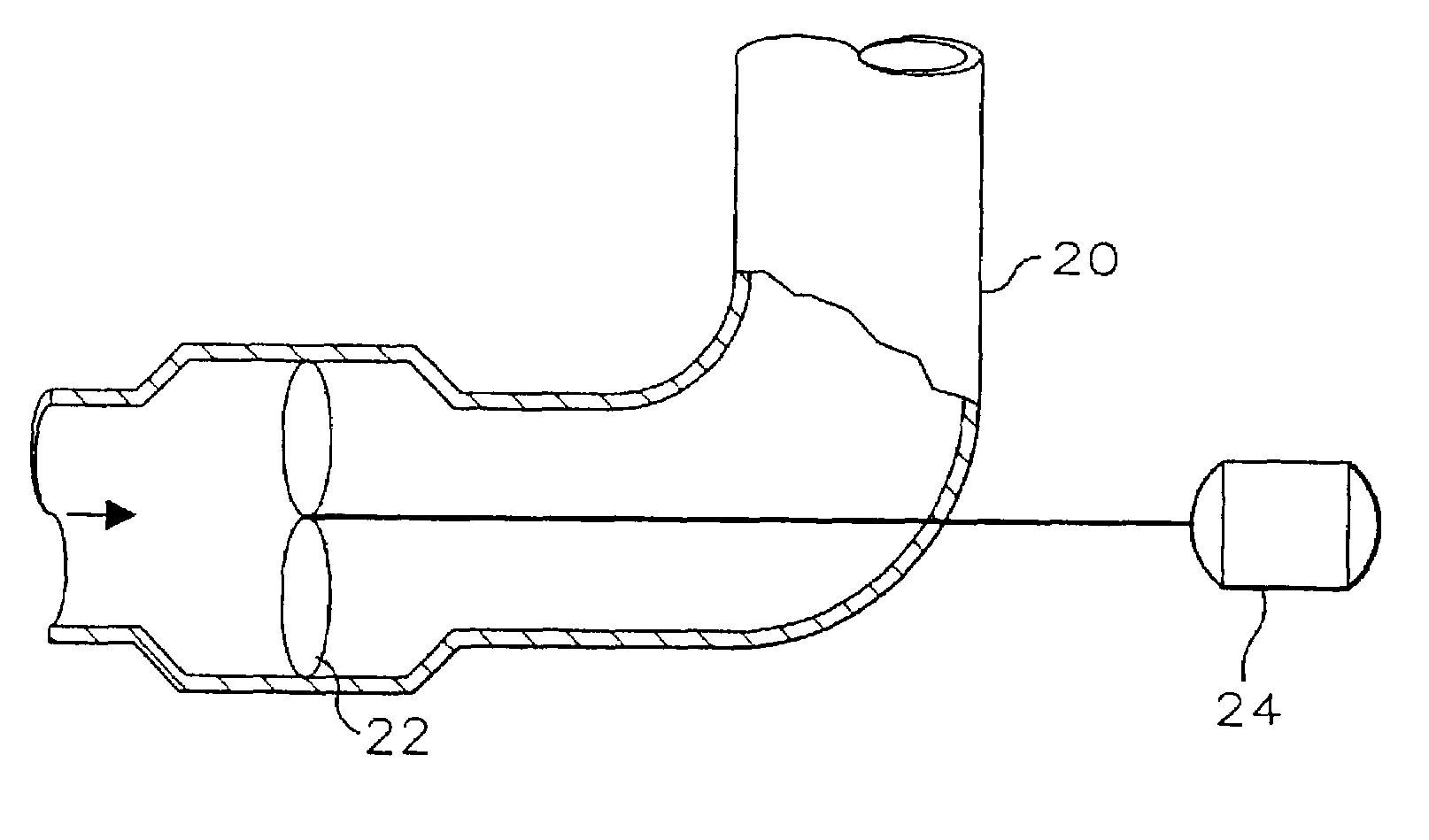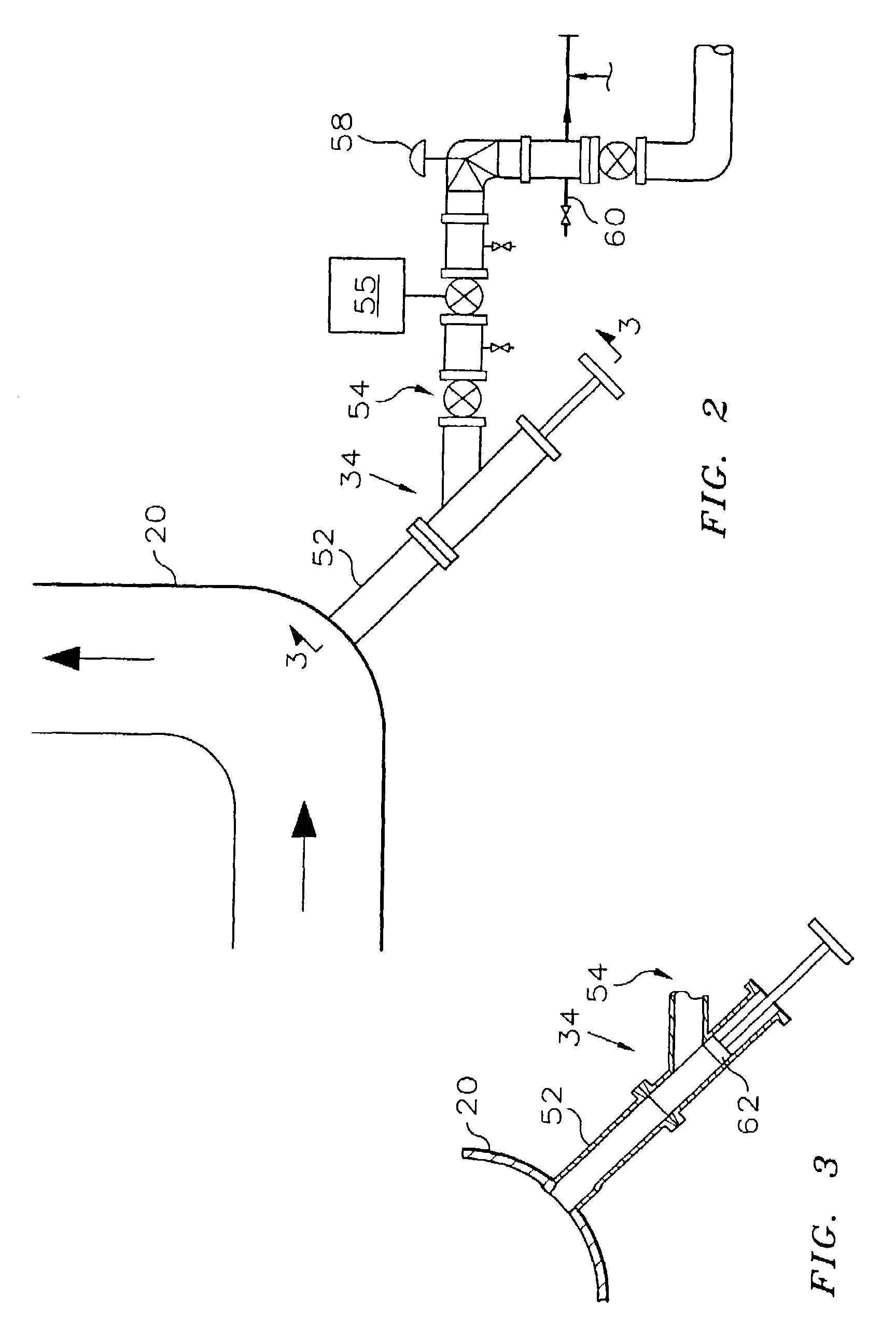Slurry polymerization reactor having large length/diameter ratio
a polymerization reactor and large length-to-diameter ratio technology, applied in chemical/physical/physical-chemical processes, chemical apparatuses and processes, synthetic resin layered products, etc., can solve the problems of settling legs, interference with the flow of slurry, and frequent maintenance of the recovery system downstream
- Summary
- Abstract
- Description
- Claims
- Application Information
AI Technical Summary
Problems solved by technology
Method used
Image
Examples
example 1
[0058]One example of the invention is a process employing a low-density metallocene resin which is heat transfer limited. The reactor temperature is 175° F. (79° C.) and the minimum coolant temperature at the reactor inlet is 115° F. (46° C.). The catalyst production is adequate to maintain the desired high production rate and low ash level, and other conditions are controlled so the rate of heat transfer is the limiting factor on production. The dimensions of the respective reactors of different nominal diameters are as given above.
[0059]In this process, as shown in Table 2, the surface area per unit reactor volume and the production rate (% of non-heat-limited production) increase with decreasing reactor diameter, compared to the production rate of a resin that is not heat transfer limited.
[0060]The effect of per cent solids in the reactor on the saltation velocity for a given reactor diameter is shown by Table 3, which provides the minimum circulation velocity to avoid saltation ...
example 2
[0061]A four-vertical-leg polymerization reactor using a 26-inch (0.66 m) Lawrence Pumps Inc. pump impeller D51795 / 81-281 in a M51879 / FAB casing was used to polymerize ethylene and hexene-1. This pump was compared with a 24-inch (0.61-m) pump that gave less aggressive circulation (0.66 ft / ft or m / m of pressure drop vs. 0.98 ft / ft or m / m). This was then compared with the same more aggressive circulation and a continuous take off assembly of the type shown by reference character 34 of FIG. 5. The results are shown in Table 4.
example 3
[0062]Representative loop reactor length / reactor outside diameter ratios are calculated in Table 5 for the various loop reactors described in U.S. Pat. Nos. 6,239,235 and 6,204,344. In Table 5, the “Row” column is added for easy reference to a particular row of data. The “Reference” column indicates which patent discloses the reactor in question (the '235 patent or the '344 patent), and at what column and line of the patent the disclosure is found. (for example, the first entry indicates a description in the '235 patent, col. 7, lines 12–14). “OD” indicates the nominal or outside diameter of the reactor pipe (this should not be confused with the diameter of the loop, which would be much greater),“ID” indicates the inside diameter of the reactor pipe. “Length” is the length of the reactor (i.e. one circuit of the reactor loop). “Vol.” is the volume of the reactor. “L / OD ratio” is the ratio of the reactor length to the pipe diameter, expressed in the same units so the ratio is unitles...
PUM
| Property | Measurement | Unit |
|---|---|---|
| length/diameter | aaaaa | aaaaa |
| diameter | aaaaa | aaaaa |
| diameter | aaaaa | aaaaa |
Abstract
Description
Claims
Application Information
 Login to View More
Login to View More - R&D
- Intellectual Property
- Life Sciences
- Materials
- Tech Scout
- Unparalleled Data Quality
- Higher Quality Content
- 60% Fewer Hallucinations
Browse by: Latest US Patents, China's latest patents, Technical Efficacy Thesaurus, Application Domain, Technology Topic, Popular Technical Reports.
© 2025 PatSnap. All rights reserved.Legal|Privacy policy|Modern Slavery Act Transparency Statement|Sitemap|About US| Contact US: help@patsnap.com



